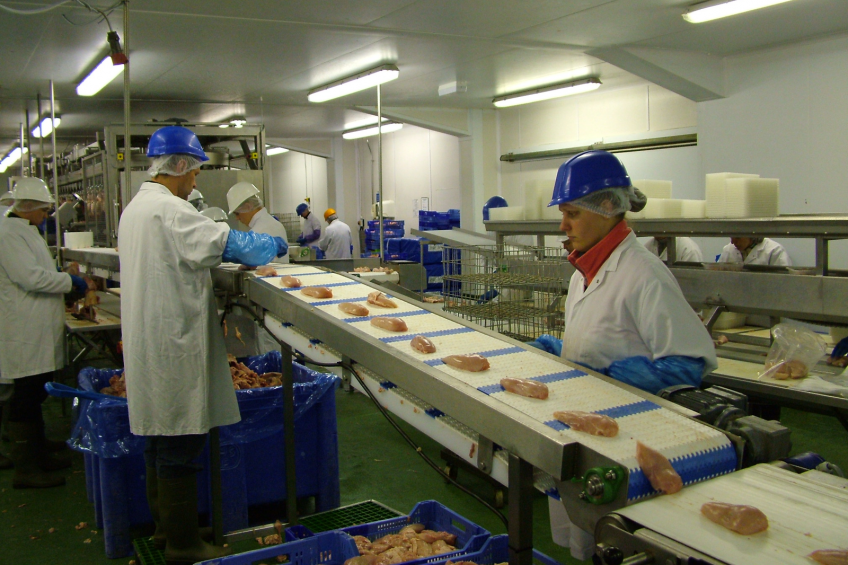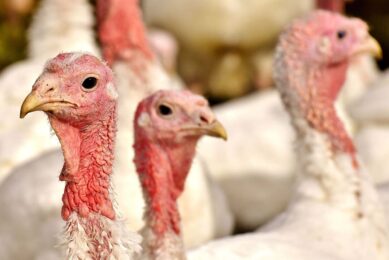The battle against Salmonella in poultry production

Human salmonellosis is a major public health concern, and salmonellae are among the most common bacterial foodborne pathogens worldwide.
By Doris Mueller-Doblies, Dr. med. vet. MRCVS, Animal Health and Veterinary Laboratories Agency (AHVLA), Weybridge, Addlestone, UK
Across the EU, salmonellosis was the second most commonly reported zoonosis in 2012, with 91,034 confirmed cases and an EU-wide notification rate of 22.2 cases per 100,000 population. However, the true number of cases is likely to be higher due to underreporting of cases, but the underreporting factor is likely to differ significantly between member states. Hospitalisation rates for salmonellosis are on average 45% of confirmed cases; this reaches 91% for some member states, indicating that in those countries, only the most severe cases are being reported.
The number of reported human salmonellosis cases has continued to decrease in 2012, with a 4.7 % decrease in confirmed cases compared with 2011 and a 32.4% decrease since 2008. Since 2004, human cases have decreased by 53.5%.
S. Enteritidis (SE) and S. Typhimurium (ST) have been the dominant serovars causing human salmonellosis for many years and have therefore been the main focus for EU legislation aiming at Salmonella reduction in the poultry industry. While human infections with SE originate mainly from eggs and egg products, ST infections originate predominantly from pigs, cattle and poultry meat, as well as from environmental contamination, contact with companion animals and wild bird related infections.
Control programmes
In Europe, initiatives to control Salmonella infection in commercial flocks of laying hens started in some member states between the end of the 1980s and the beginning of the 1990s. Starting in 2007 with the breeding chicken sector, EU-wide control programmes in the chicken and turkey sectors have since been implemented in accordance with Regulation (EC) No 2160/2003. These control programmes aim to meet the Salmonella reduction target set by Regulation (EC) No 1003/2005 and cover the following serovars: S. Enteritidis, S. Typhimurium, S. Infantis, S. Virchow and S. Hadar in breeding chickens and S. Enteritidis and S. Typhimurium in laying hens and broiler chickens.
The prevalence of breeding and laying flocks being positive for the regulated serovars has declined every year since the introduction of the National Control Programmes and has been below the target of 1% and 2% respectively since 2010. The prevalence of broiler flocks being positive for regulated serovars has also declined since the introduction of the National Control Programme and has always been below the target of 1%. However, a small number of member states still don’t meet the set target for either one or more production sectors.
Successful measures
A number of measures have been responsible for the decline in the number of Salmonella-positive chicken flocks, including vaccination of breeding and laying birds, improved hygiene, cleaning and disinfection and biosecurity standards in general and greater awareness of risk factors such as rodents. A number of live and killed Salmonella vaccines are available for breeding and laying chickens, which are being used either on their own or in combination, to provide protection against the regulated serovars.
The introduction of improved control measures on laying and broiler farms and in the breeding pyramid, together with the implementation of the National Control Programmes on Salmonella in chickens across the EU, has led to the substantial reduction in human salmonellosis cases in the EU over the past few years.
[Source: Abstracts of the Merial Avian Forum 2014, Paris]
Join 31,000+ subscribers
Subscribe to our newsletter to stay updated about all the need-to-know content in the poultry sector, three times a week. Beheer
Beheer








 WP Admin
WP Admin  Bewerk bericht
Bewerk bericht